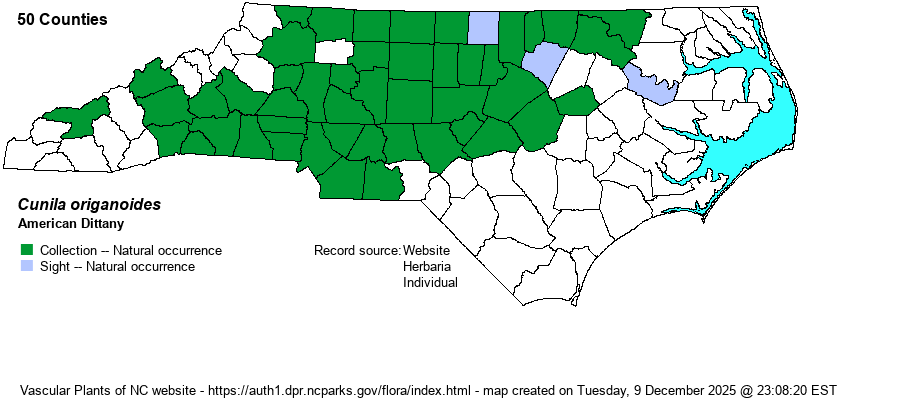| Author | (L.) Britton | |
| Distribution | Primarily limited to the Piedmont, where it occurs in nearly all counties. Sparingly present into the upper Coastal Plain, in the northwestern portion -- east to Martin and Wilson counties. Sparingly in the lower elevations of the mountains.
This is an Eastern species, ranging from southern NY and MO south to northern GA and OK. | |
| Abundance | Common over the entire Piedmont, but rare in the northwestern Coastal Plain. Rare and local in the Mountains. | |
| Habitat | This is a species of dry, often rocky, acidic soil, usually on sloping ground. It occurs in dry and usually rocky woods, bluffs, cliffs, and other shady to semi-shaded places with thin soil on slopes or ridges. |
| Phenology | Blooms from late August to September, and fruits from October to November. | |
| Identification | This is the only species in the genus in the U.S., and thus is quite different from other species, being quite familiar to biologists working in the Piedmont. It is a rather low and "bushy" plant, to about 9-12 inches tall, with many branches from near the base, and quite slender but wiry and stiff/straight stems and branches. The paired opposite leaves are small and ovate to triangular, clasping, serrate, but only about 1.5 inches long and half as wide. They are very mint-scented when broken. In many of the upper leaf axils are clusters of small pink flowers, each about 1/3-inch long and narrow. A few stamens and the pistil extend beyond the corolla. As a general rule, identify this plant by its low and bushy look with numerous small triangular leaves, very fragrant when broken; and the many axillary clusters of small pink flowers. | |
| Taxonomic Comments | None
| |
| Other Common Name(s) | Wild-oregano, Stone-mint, Common Dittany | |
| State Rank | S5 | |
| Global Rank | G5 | |
| State Status | | |
| US Status | | |
| USACE-agcp | | |
| USACE-emp | | |

